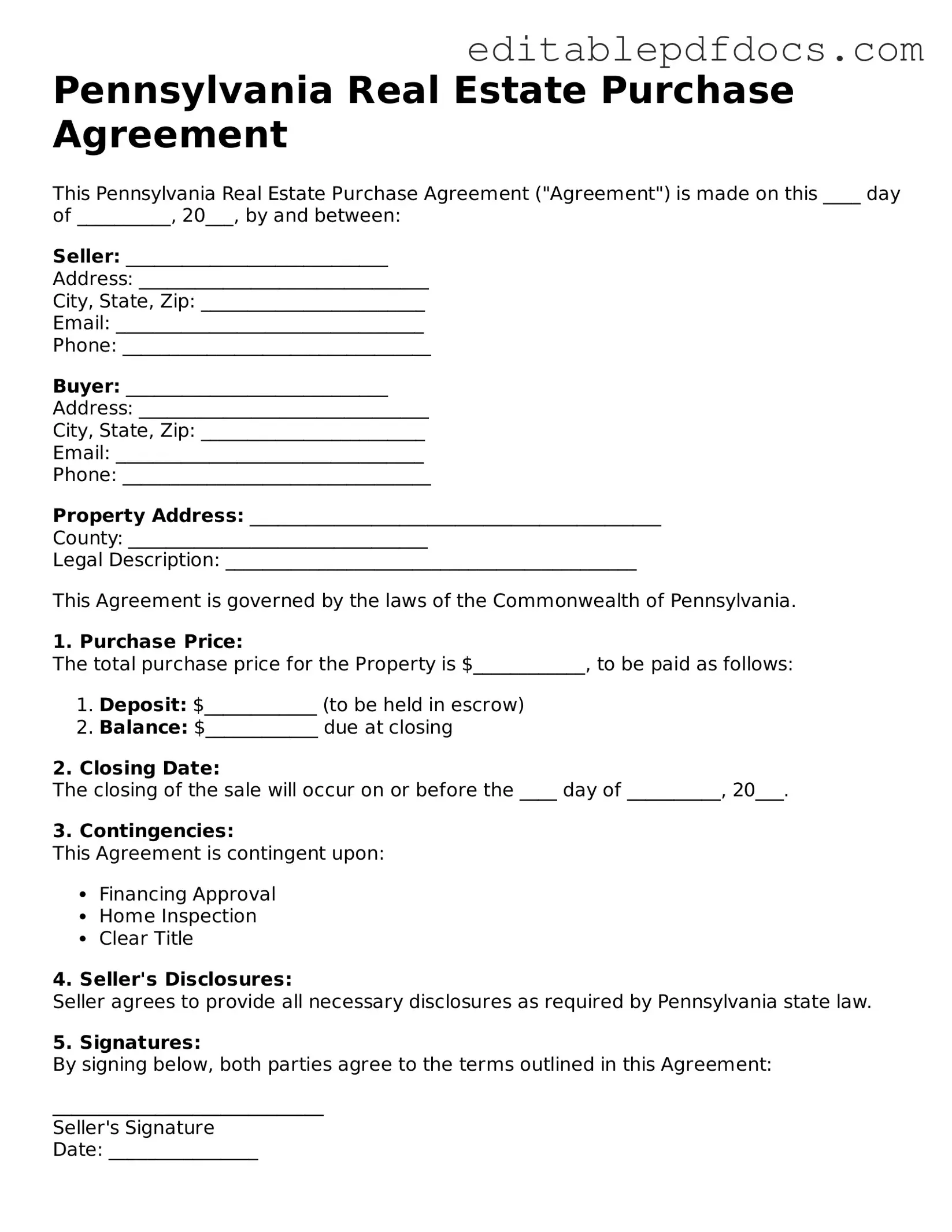When filling out the Pennsylvania Real Estate Purchase Agreement form, many individuals make common mistakes that can lead to complications down the line. Understanding these pitfalls can help ensure a smoother transaction. One frequent error is failing to provide complete information about the property. Buyers and sellers must accurately describe the property, including the address and any relevant details. Omitting this information can create confusion and potential legal issues.
Another mistake is neglecting to specify the purchase price clearly. This figure should be prominently stated, as it forms the basis of the agreement. Ambiguities or vague terms can lead to disputes later. Additionally, not including earnest money details can cause problems. This deposit shows a buyer's commitment and should be clearly outlined in the agreement, including the amount and conditions for its return.
People often overlook the importance of including contingencies. Contingencies are conditions that must be met for the sale to proceed, such as obtaining financing or passing a home inspection. Without these, a buyer may find themselves in a difficult situation if issues arise. Furthermore, failing to state the closing date can lead to misunderstandings. It is essential to agree on when the transaction will be finalized to avoid delays.
Another common error is not addressing who is responsible for closing costs. These costs can include fees for inspections, title searches, and other expenses. Clearly stating who will bear these costs can prevent disputes. Additionally, individuals sometimes forget to include the necessary signatures. All parties involved must sign the agreement for it to be legally binding. Missing a signature can render the entire agreement void.
Misunderstanding the implications of “as-is” sales is also a frequent mistake. When a property is sold as-is, the seller is not obligated to make repairs. Buyers should be fully aware of what this means before signing. Lastly, not seeking legal advice can be detrimental. Real estate transactions can be complex, and consulting with a professional can help individuals avoid these mistakes and ensure their interests are protected.
